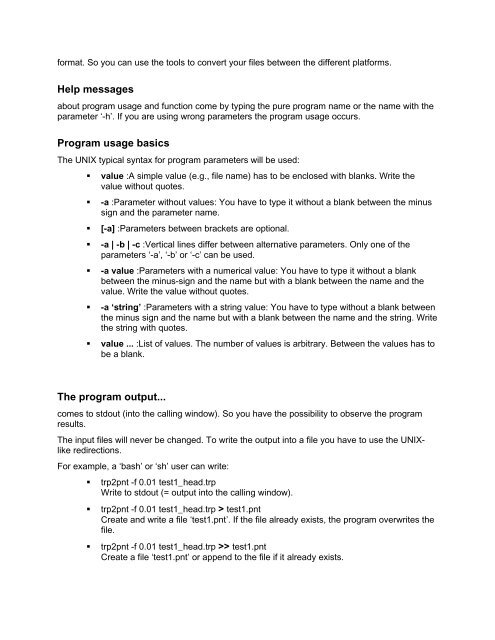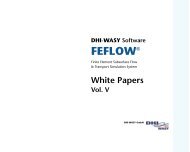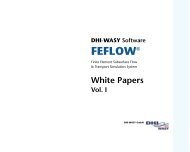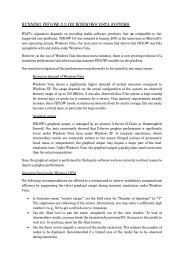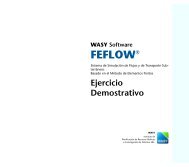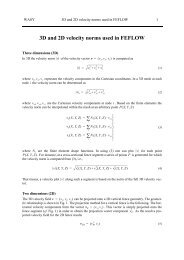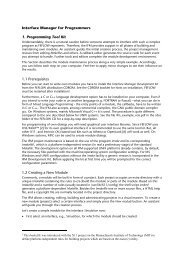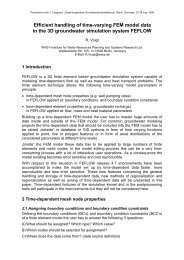Tools to convert, debug and - FEFlow
Tools to convert, debug and - FEFlow
Tools to convert, debug and - FEFlow
You also want an ePaper? Increase the reach of your titles
YUMPU automatically turns print PDFs into web optimized ePapers that Google loves.
format. So you can use the <strong>to</strong>ols <strong>to</strong> <strong>convert</strong> your files between the different platforms.<br />
Help messages<br />
about program usage <strong>and</strong> function come by typing the pure program name or the name with the<br />
parameter ‘-h’. If you are using wrong parameters the program usage occurs.<br />
Program usage basics<br />
The UNIX typical syntax for program parameters will be used:<br />
value :A simple value (e.g., file name) has <strong>to</strong> be enclosed with blanks. Write the<br />
value without quotes.<br />
-a :Parameter without values: You have <strong>to</strong> type it without a blank between the minus<br />
sign <strong>and</strong> the parameter name.<br />
[-a] :Parameters between brackets are optional.<br />
-a | -b | -c :Vertical lines differ between alternative parameters. Only one of the<br />
parameters ‘-a’, ‘-b’ or ‘-c’ can be used.<br />
-a value :Parameters with a numerical value: You have <strong>to</strong> type it without a blank<br />
between the minus-sign <strong>and</strong> the name but with a blank between the name <strong>and</strong> the<br />
value. Write the value without quotes.<br />
-a ‘string’ :Parameters with a string value: You have <strong>to</strong> type without a blank between<br />
the minus sign <strong>and</strong> the name but with a blank between the name <strong>and</strong> the string. Write<br />
the string with quotes.<br />
value ... :List of values. The number of values is arbitrary. Between the values has <strong>to</strong><br />
be a blank.<br />
The program output...<br />
comes <strong>to</strong> stdout (in<strong>to</strong> the calling window). So you have the possibility <strong>to</strong> observe the program<br />
results.<br />
The input files will never be changed. To write the output in<strong>to</strong> a file you have <strong>to</strong> use the UNIXlike<br />
redirections.<br />
For example, a ‘bash’ or ‘sh’ user can write:<br />
trp2pnt -f 0.01 test1_head.trp<br />
Write <strong>to</strong> stdout (= output in<strong>to</strong> the calling window).<br />
trp2pnt -f 0.01 test1_head.trp > test1.pnt<br />
Create <strong>and</strong> write a file ‘test1.pnt’. If the file already exists, the program overwrites the<br />
file.<br />
trp2pnt -f 0.01 test1_head.trp >> test1.pnt<br />
Create a file ‘test1.pnt’ or append <strong>to</strong> the file if it already exists.


